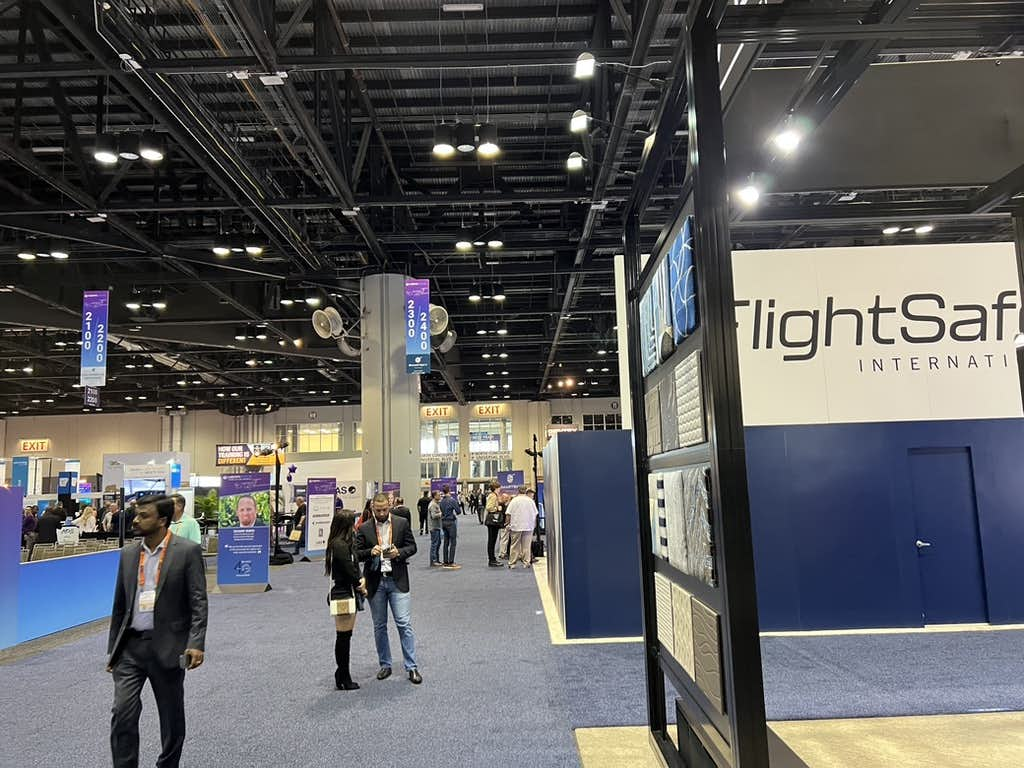After a decade-long holding pattern following the 2008 financial crisis, top business aviation forecasters say the industry can navigate the world’s economic and political woes #NBAA #NBAA2022 @NBAA #bizav #privatejet.

Who? Us? Everything is fine. After being sent to a decade-long holding pattern by the 2008 financial crisis, it’s different this time. At least, that’s a summary from four of private aviation’s most followed forecasts.
Leading up to the National Business Aviation Association’s annual conference in Orlando, used private jet broker Jetcraft released its annual five-year outlook.
Jetcraft CEO Chad Anderson said, “Preowned transactions should maintain their new higher base and growth rates, reaching 10,921 transactions valued at $66.6 billion over the forecast period.”
That’s fewer deals than last year, but for more money. The 2021 report predicted 12,261 used private jet transactions representing $57.2 billion.
Jetcraft points out that 2021 was a record year for used jet sales with an annual total transaction value of $14.5 billion, a nearly 40% increase from 2020, mainly driven by deals for larger jets.
Like others, Jetcraft says the current stormy skies are different from the “2004-2008 boom.”
On the eve of the conference, Honeywell released its annual look – the 31st edition – at new aircraft deliveries.
Honeywell forecasts 8,500 new business jet deliveries worth $274 billion from 2023 to 2032. That’s up 15% in deliveries and expenditures from the same forecast a year ago.
Honeywell Aerospace President, Americas Aftermarket, Heath Patrick, commented, “Demand for new business jets is as high as we’ve seen it since 2015, and we expect high levels of demand and expenditures for new aircraft for several more years.”
From JetNet, which is now in its 13th year, its quarterly update underscored that, at least for today, the industry is in good shape.
“We have hyper demand, and we are struggling to supply that demand, and that’s driven up pricing…the owner/operator community is optimistic,” says JetNet researcher Rolie Vincent.
Another concern in the used market is inventory, as there isn’t much. “Very depleted,” according to JetNet’s Paul Cardarelli.
Following the financial crisis, nearly 20% of all private jets were for sale. Today it’s between four and five percent.
Vincent says the current concern is with the five major OEMs carrying a $47 million backlog for new jet orders, it’s the waiting time – not economic storm clouds – that is likely to deter buyers.
In its survey of operators, which includes corporate flight departments, 58% said demand from new customers would increase further in the next five years compared to 19% who expect it to stay the same. Only 21% expect a decrease.
Again, the issue is fulfilling demand.
In North America, 73% of respondents said they have had difficulty recruiting and retaining pilots over the past year.
69% say they have similar issues with mechanics.
Asked, “If you have an opportunity to invest $500 million in the business aviation industry, where would you invest for the best return,” the answer was maintenance and overhaul facilities.
From the International Aircraft Dealers Association, the sentiment was similarly optimistic.
“Our feeling that the end is near continues to be proven wrong by activity in the markets, where demand continues to outpace supply and values have remained very close to their recent highs,” says Paul Kirby of NetJets’ QS Partners.
IADA members say end-of-year activity in 2022 will be even stronger due to the impending end of 100% accelerated depreciation.
There was some caution. Site-unseen purchases and purchases without pre-purchase inspections have lessened.
The Q3 responses show a slight increase in demand and supply in the turboprop market for the next six months. The light jet, midsize jet, and ultra-long-range jet markets returning to stable supply and demand.
Pricing across all aircraft categories is projected to stabilize, IADA executives told the media during an NBAA press conference.
What’s more, they said they are not seeing a discernable increase in deals that fell apart, a metric of finding oneself flying through the storm – instead of around it.